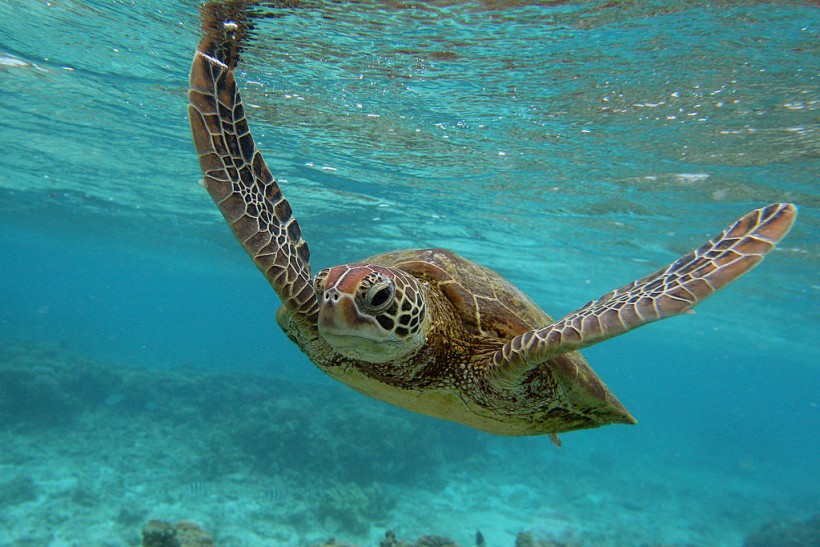A Florida Keys-based Turtle Hospital manager Bette Zirkelbach recently said scientists had investigated sea turtle hatchlings and the remnants of unhatched eggs.
According to a report from TODAY, the hospital manager said they discovered "over the past four summers that there have been no sea turtles.
She added that the ratios had been steadily going up to reveal more and more females, yet to think that there have been no boy turtles. She elaborated, "we're not going to have baby turtles without boy turtles."
The impact of the climate crisis on sandy beaches is impacting more than just rising sea levels, as well as how much sunscreens humans apply to their skin. It also contributes to an upswing in the number of turtles that are born females.
ALSO READ: Here's How Sea Turtles Remember Their Natal Beach

A Hawksbill sea turtle is seen swimming on January 15, 2012, on Lady Elliot Island, Australia. Lady Elliot Island is one of the three island resorts in the Great Barrier Reef Marine Park (GBRMPA) with the highest designated Marine National Park Zone classification by GBRMPA.
Gender of Sea Turtle Hatchlings Dependent on the Temperature
Unlike humans, whose gender is identified at fertilization, the gender of sea turtle hatchlings depends on the temperature.
The National Oceanographic Atmospheric Administration states that the hatchlings will be female if a developing sea turtle egg incubates higher than 88.8 Fahrenheit.
On the other hand, if an egg incubates lower than 81.86 degrees Fahrenheit, it will be male. Anything in the middle will produce a mix of the two genders.
Specifically, in Florida, temperatures in July range from 90 to 95 degrees Fahrenheit, Florida State University's Climate Center reported.
More Female Sea Turtles than Males
A recent Reuters report showed that an increase in temperatures has resulted in an imbalance of sexes, and it is not only affecting the sea turtles of Florida.
WATCH: Florida's sea turtles are grappling with a gender imbalance made worse by climate change. Recent heat waves have caused the sand on some beaches to get so hot that nearly every turtle born was female https://t.co/jFI0lxZdlO pic.twitter.com/mJ2u7YlaQY
— Reuters (@Reuters) August 6, 2022
In 2018, research published in the Current Biology journal showed that in the northern barrier reef area of Australia, beaches had turned specifically female-biased.
This same research discovered, too, that for more than 20 years, rookeries or breeding colonies had produced more female sea turtles than males.
Their study findings showed that in more cool and southern Great Barrier Reef or GBR nesting beaches, sea turtles exhibited a moderately female sex bias, representing 65 to 69 percent of their gender's population.
The research specified that the "complete feminization" of the said population is plausible.
Sea Turtles, 'Keystone' Species
Sea turtles are regarded as keystone species, Zirkelbach explained. This means that the other organisms in their ecosystem greatly depend on their existence, specifically in imparting balance among prey, not to mention helping seagrass beds flourish.
Minus the sea turtles, the marine ecosystem's natural order would be disrupted. That is why Zirkelbach says such findings on the female population of sea turtles "are particularly alarming."
She also noted that sea turtles have been on Earth for more than 110 million years. She added he also thinks that is a vital part of the story since they have evolved and survived the oceans for more than 110 million years.
These species were swimming in the oceans when dinosaurs were on the land, and thus, it isn't easy to even think about or conceive as a human to ever think about it, continued explaining Zirkelbach.
A report about the Florida female sea turtles is shown on the Straits Times' YouTube video below:
RELATED ARTICLE: Sea Turtles Lay Motionless to Prevent Tiger Shark Attacks [WATCH]
Check out more news and information on Animals in Science Times.














